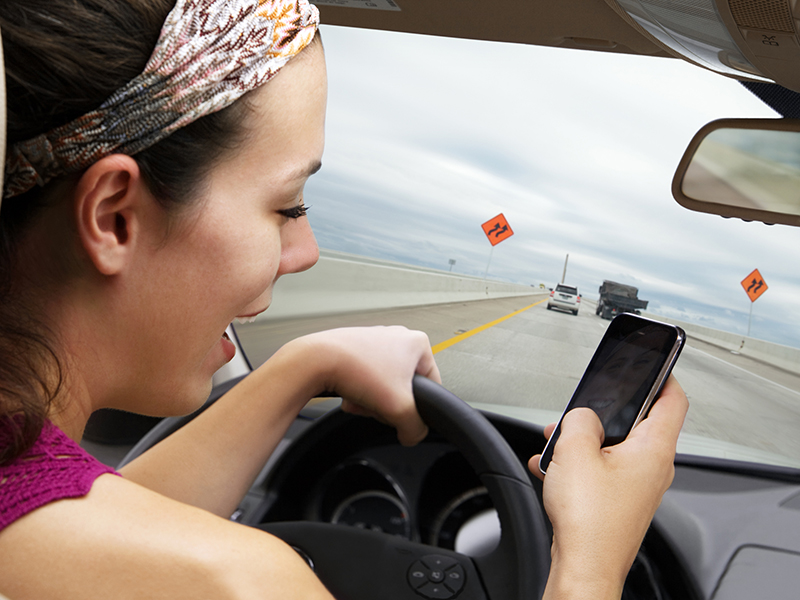
These highway features may encourage distracted driving
June 25, 2021 by Greg Meckbach

Print this page Share
Medians and wide shoulders on highways could encourage distracted driving by giving drivers a false sense of security, transportation researchers suggest in a recent paper.
“The combination and presence of a shoulder, median, higher speed limit, and extra lanes could encourage more phone use while driving,” the Texas A&M Transportation Institute said in a press release earlier this month.
Texas A&M was highlighting findings from Characterizing Phone Usage While Driving: Safety Impact from Road and Operational Perspectives Using Factor Analysis, an article recently published in Accident Analysis & Prevention.
“The study could help transportation agencies identify countermeasures on roadways to reducing distracted-related crashes and provide researchers with a new perspective to study phone-relation behavior rather than focus on the drivers’ personalities,” Texas A&M communications specialist Alyson Chapman wrote in a recent article posted to the engineering school’s website.
Distracted driving is one of the main factors affecting Canadian auto insurers’ loss frequency, A.M. Best Company Inc. suggested in COVID-19 Taking Its Toll on Canada’s Economy and Insurance Industry, a report released this past September. In that paper, A.M. Best reported that among Canadian insurers, the loss ratio in “auto personal accident” deteriorated nearly 10 points, from 70.4% in 2018 to 80.3% in 2019. In auto liability, the Canadian P&C industry’s loss ratios rose steadily. Those ratios were 62.3% (in 2016), 67.3% (2017), 71.4% (2018), and 73% (2019), A.M. Best reported. Both the increasing cost to repair vehicles and distracted driving are among the causes, A.M. Best suggests.
Road features like shoulders and medians provide a “safety buffer” for drivers, granting them a sense of security, Chapman wrote for Texas A&M, describing the findings of the Texas A&M research published in Accident Analysis & Prevention. On a controlled access freeway, drivers may be less cautious because they enter and exit without having to watch traffic lights.
The authors of the paper include: Jack Kong, a graduate research assistant at Texas A&M Transportation Institute; Subasish Das, assistant research scientist in Texas A&M Transportation Institute’s roadway safety division; Tracy Zhou, associate transportation researcher in Texas A&M Transportation Institute’s research and implementation division; and Texas A&M engineering professor Yunglong Zhang.
Kong was quoted by Texas A&M as saying the study used a large driving data set (without the drivers’ real names), which the researchers obtained from a private data service provider. Specifically, the data is from a smartphone application that promotes defensive driving without being distracted by the phone, Chapman wrote.
“The researchers integrated all phone-use-while-driving events with the Texas road inventory and the distracted crash count on each road segment in the road inventory from the crash database of Texas.”
In Canada, distracted driving is on the minds of politicians at both the provincial and federal levels.
“Research has shown that drivers who are distracted do not fully scan the environment looking for potential issues, are slow to identify risks, and then they are slow to react appropriately,” said Karen McCrimmon, Liberal MP for Kanata-Carleton, during an earlier a debate in the House of Commons.
“In the last five years, a reported 20% of motor vehicle accident fatalities occurred in collisions where one of the drivers had been distracted or inattentive,” McCrimmon told the Commons in 2017 during second reading of Bill C-373, a private member’s bill that was ultimately defeated. “Over the same period, 33% of reported motor vehicle injuries occurred in collisions where distraction or inattentiveness was found to be a contributing cause of the crash.”
Had Bill C-373 been passed into law, it would have mandated a number of measures including the collection of data relating to incidents involving the use of hand-held electronic devices.
Feature image via iStock.com/nycshooter
Have your say: